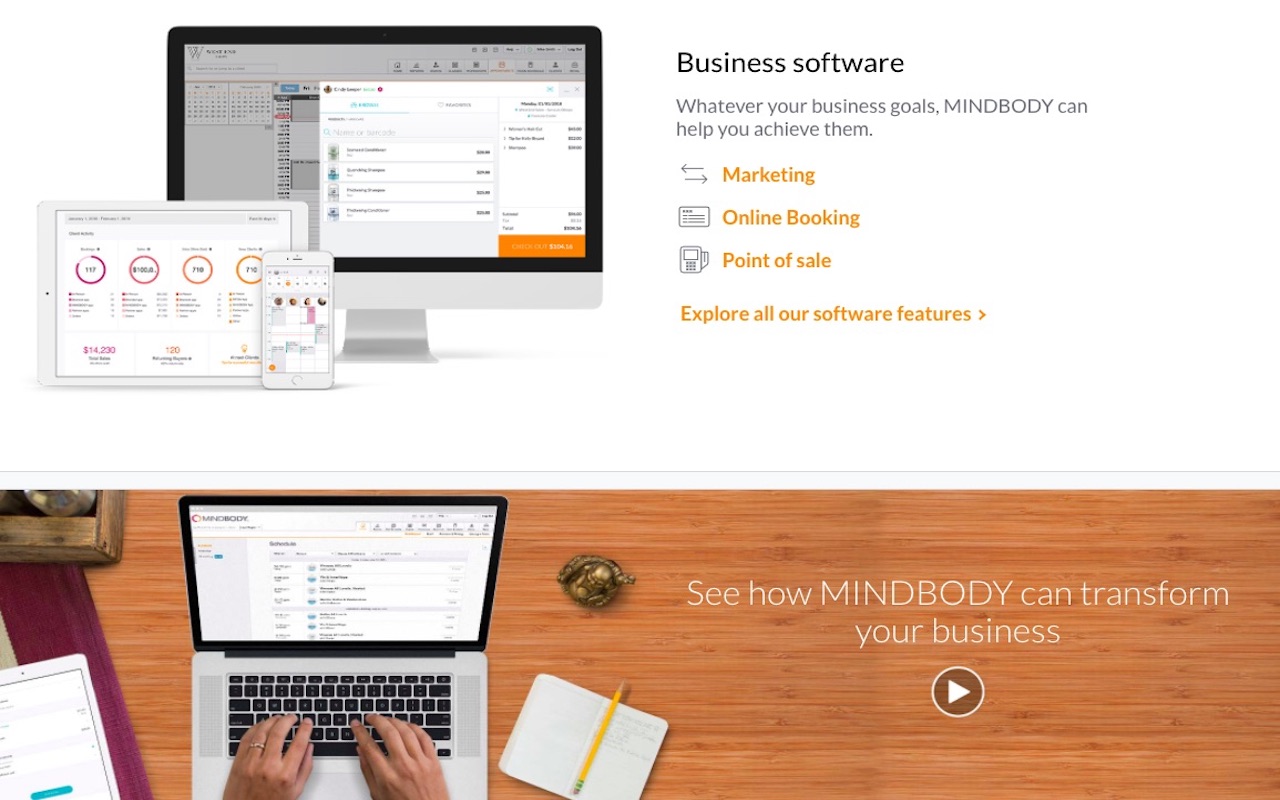10 Small-Cap Growth Stocks to Buy Now
In a year when the major market indexes are struggling to put up gains, it might be time to take a closer look at smaller stocks with outsized growth prospects.


In a year when the major market indexes are struggling to put up gains, it might be time to take a closer look at smaller stocks with outsized growth prospects. Historically, small-cap growth stocks have a low performance correlation to stocks with large market values, asset manager Federated Investors notes. They also tend to outperform stocks with big market caps over time, too.
Small-cap growth stocks have certainly paid off so far in 2018. The large-cap Dow Jones Industrial Average is off 3% for the year-to-date. But the small-cap growth benchmark Russell 2000 growth index is actually flat.
“What we love about small-cap growth stocks is that they are small businesses that constantly innovate and are creating their own demand,” writes Federated Kaufmann Fund (KAUAX) portfolio manager Stephen DeNichilo. “They are not reliant on market tailwinds. They create their own trajectory and are masters of their own universe.”
When we talk about small-cap growth stocks, we generally mean stocks with market values of between about $300 million and $3 billion. As for the growth part, the companies these stocks represent might be generating annualized sales gains of 30% or more. Naturally, expectations for outsized earnings growth are part of the equation too.
Here are 10 small-cap growth stocks to buy now. These 10 picks are smaller companies that have average analyst ratings of “Buy” or better. Several of these small-cap growth stocks that stood out are health-care names, but specialty chemicals, information technology and even veterinary services make appearances too. One thing they all have in common is that analysts are bullish on them at current levels.
Disclaimer
Data is as of April 25, 2018. Companies are listed in alphabetical order. Analysts’ ratings provided by Zacks Investment Research. Click on ticker-symbol links in each slide for current share prices and more.

Aimmune Therapeutics
- Market value: $1.8 billion
- Analysts’ opinion: 7 strong buy, 1 buy, 0 hold, 0 sell, 0 strong sell
- Aimmune Therapeutics (AIMT, $30.82) aims to save lives. The clinical-stage biopharmaceutical company is developing treatments to desensitize people with food allergies. If successful, its AR101 treatment would ensure that accidental exposure to say, peanuts, wouldn’t cause a life-threatening condition.
Analysts at Credit Suisse, who rate shares at “Outperform” (equivalent of buy), say the late-stage clinical data looks encouraging. If all goes well, Aimmune could get U.S. Food and Drug Administration approval next year and have a blockbuster on its hands. Credit Suisse’s best-case scenario has Aimmune capturing up to 70% of the market for such drugs in the U.S. and Europe.

Esperion Therapeutics
- Market value: $1.9 billion
- Analysts’ opinion: 7 strong buy, 0 buy, 4 hold, 0 sell, 0 strong sell
- Esperion Therapeutics (ESPR, $69.25) is developing a cholesterol-lowering drug for patients who don’t tolerate current crop of medications on the market, and analysts think it has a winner on its hands. At Stifel, which rates shares at “Buy,” analysts expect the company to complete regulatory submissions for approval by the first quarter of next year. Ultimately, Stifel thinks Esperion’s cholesterol drug – currently known as ETC-1002, can eventually generate more than $2 billion in sales in the U.S. alone.
The company, which is forecast to book revenue of just $32 million this year, according to data from Thomson Reuters, is poised for breakout growth if ETC-1002 hits like Stifel thinks it will.

Evolent Health
- Market value: $1.3 billion
- Analysts’ opinion: 12 strong buy, 0 buy, 0 hold, 0 sell, 0 strong sell
Analysts are bullish on Evolent Health’s (EVH, $16.55) ability to deliver outsized revenue growth. Indeed, Wall Street expects the health-care software and consulting services company to deliver a year-over-year sales increase of 32% in 2018.
William Blair analysts say that “at a minimum,” shares will appreciate in line with strong sales growth going forward. Health-care providers such as Orlando Health, Community Care Cooperative and Crystal Run Healthcare are just some of the company’s clients driving these gains, Blair notes. “We thus reiterate our ‘Outperform’ rating and continue to recommend purchase of EVH shares,” the analysts say.
Analysts project long-term earnings growth to average 30% annually for the next five years.

Glaukos
- Market value: $1.1 billion
- Analysts’ opinion: 8 strong buy, 0 buy, 1 hold, 0 sell, 0 strong sell
- Glaukos (GKOS, $31.52) makes the iStent, a tiny medical implant used to reduce eye pressure caused by glaucoma. The device, which is implanted during cataract surgery, currently is in use in 300,000 eyes around the world.
Analysts expect the company to deliver average annual profit growth of 40% for the next half-decade. That’s in part because Glaukos has a first-mover advantage with iStent, and the market for such a product remains largely untapped.
Perhaps most important, however, is that Glaukos has other glaucoma products in the works. “(The) pipeline, if successful, would give Glaukos the broadest set of products to treat glaucoma of any pharmaceutical or device company,” write analysts at William Blair Equity Research, who rate shares at “Outperform.”

Installed Building Products
- Market value: $1.8 billion
- Analysts’ opinion: 5 strong buy, 1 buy, 2 hold, 0 sell, 0 strong sell
- Installed Building Products (IBP, $31.52) has been on an acquisition tear. The maker of home and commercial garage doors and control systems bought its fourth company in as many months in early April. Last year IBP bought 16 companies – predominantly small chains that supply and install building products, Columbus Business First reports.
Analysts largely approve of the company’s growth-through-acquisition strategy given the robust national housing market. Credit Suisse rates shares in IBP at “Outperform,” citing a “favorable macroeconomic backdrop” and “positive industry fundamentals.”
Wall Street’s pros, on average, expect earnings per share to rise 40% this year to $2.86 a share, according to a survey by Thomson Reuters. Revenue is projected to increase nearly 16% to $1.31 billion.

Mindbody
- Market value: $1.9 billion
- Analysts’ opinion: 10 strong buy, 0 buy, 1 hold, 0 sell, 0 strong sell
- Mindbody (MB, $39.00) provides cloud-based business management software for the wellness services industry. Think gyms, spas and salons. Now, a recent acquisition adds thousands of fitness studios like yoga, Pilates and CrossFit into the fold.
Mindbody in March acquired Booker, a cloud-based booking management platform, for $150 million. Together, the integrated company will offer everything from marketing and retention tools to booking and payments processing for the health and wellness services industries.
Analysts think the merger will allow earnings per share to more than double in 2019, to 47 cents a share from a projected 22 cents a share this year, according to data from Thomson Reuters. Wall Street expects revenue to rise 29% this year and 24% in 2019.

PetIQ
- Market value: $535.6 million
- Analysts’ opinion: 4 strong buy, 1 buy, 0 hold, 0 sell, 0 strong sell
Analysts think PetIQ’s (PETQ, $22.53) sales growth is the cat’s meow. The company, which makes branded treats and medications for cats and dogs, is expanding into veterinary services. It acquired VIP Petcare in January and plans to open 20 to 30 veterinary service clinics during 2018, including 20 in Walmart (WMT) locations, note analysts at William Blair Equity Research, who rate shares at “Outperform.”
Sales are forecasts to jump by almost 79% in 2018 alone, according to data from Thomson Reuters.
“Management continues to forecast that its veterinary services clinics – coupled with the company’s core pet medication product lines – will help PetIQ achieve total sales of more than $1 billion by 2023,” Blair analysts say. PetIQ recorded just $267 million in sales last year.

PQ Group
- Market value: $1.9 billion
- Analysts’ opinion: 7 strong buy, 0 buy, 2 hold, 0 sell, 0 strong sell
Specialty chemical company PQ Group (PQG, $14.37) is set to deliver truly outsized annualized profit growth, the pros say. They expect earnings per share to increase an average of 35% annually for the next five years, according to data from Thomson Reuters.
Some of the bullishness hinges on the rapid adoption of ThermoDrop, a thermoplastic material used to paint lines on roads. Analysts at Credit Suisse rates shares at “Outperform,” citing demand for ThermoDrop, which is supposed to increase crews’ productivity by as much as 35%, and some other specialty products.
The analysts also are bullish on PQ Group’s progress in paying down debt and boosting free cash flow.

Quidel
- Market value: $2.0 billion
- Analysts’ opinion: 4 strong buy, 1 buy, 1 hold, 0 sell, 0 strong sell
Analysts are bullish on Quidel’s (QDEL, $54.86) growth prospects.
The maker of diagnostic healthcare tests was once pigeonholed as “a flu company and a stock to be traded around the respiratory season,” note William Blair analysts, who rate shares at “Outperform.” But FDA approvals to test for other viruses such as Lyme disease and the 2017 acquisition of Triage MeterPro cardiovascular and toxicology assets from Alere have the company set on a new path.
Analysts expect Quidel’s earnings to rise an average of 48% a year over the next five years, according to Thomson Reuters data.
“When looking at the formal longer-term forecast for the company, we believe the company is set up well for a number of years of revenue and earnings growth,” William Blair says.

Zogenix
- Market value: $1.4 billion
- Analysts’ opinion: 5 strong buy, 0 buy, 0 hold, 0 sell, 0 strong sell
- Zogenix (ZGNX, $39.15) is a small pharmaceutical company that targets orphan diseases, which the FDA defines as conditions that affect fewer than 200,000 people nationwide. Cystic fibrosis and Lou Gehrig’s disease are two of the better-known orphan diseases.
Zogenix is targeting Dravet syndrome, a type of epilepsy. Analysts say promising data from clinical trials of fenfluramine, also known as ZX008, in treating Dravet syndrome make the stock a buy. “We continue to remain bullish on Zogenix shares as ZX008 is poised to become the therapy-of-choice amongst epileptologists/neurologists,” Stifel analysts say.
The company’s earnings are projected to grow at an average annual rate of 25% for the next five years, according to data from Thomson Reuters.
Get Kiplinger Today newsletter — free
Profit and prosper with the best of Kiplinger's advice on investing, taxes, retirement, personal finance and much more. Delivered daily. Enter your email in the box and click Sign Me Up.

Dan Burrows is Kiplinger's senior investing writer, having joined the august publication full time in 2016.
A long-time financial journalist, Dan is a veteran of MarketWatch, CBS MoneyWatch, SmartMoney, InvestorPlace, DailyFinance and other tier 1 national publications. He has written for The Wall Street Journal, Bloomberg and Consumer Reports and his stories have appeared in the New York Daily News, the San Jose Mercury News and Investor's Business Daily, among many other outlets. As a senior writer at AOL's DailyFinance, Dan reported market news from the floor of the New York Stock Exchange.
Once upon a time – before his days as a financial reporter and assistant financial editor at legendary fashion trade paper Women's Wear Daily – Dan worked for Spy magazine, scribbled away at Time Inc. and contributed to Maxim magazine back when lad mags were a thing. He's also written for Esquire magazine's Dubious Achievements Awards.
In his current role at Kiplinger, Dan writes about markets and macroeconomics.
Dan holds a bachelor's degree from Oberlin College and a master's degree from Columbia University.
Disclosure: Dan does not trade individual stocks or securities. He is eternally long the U.S equity market, primarily through tax-advantaged accounts.
-
 Which Generation Pays the Most Taxes in the US?
Which Generation Pays the Most Taxes in the US?Tax Burden Polls show that most people feel like taxes are unfair. But which age group bears the brunt of the tax burden in the United States?
By Kelley R. Taylor
-
 How Much Will Car Prices Go Up With Tariffs?
How Much Will Car Prices Go Up With Tariffs?Tariffs could drive car prices up even higher, for new and used cars, as well as for American brands.
By Jim Patterson
-
 The Cheapest Places To Retire in the US
The Cheapest Places To Retire in the USWhen you're trying to balance a fixed income with an enjoyable retirement, cost of living is a crucial factor to consider.
By Stacy Rapacon
-
 Bond Basics: Zero-Coupon Bonds
Bond Basics: Zero-Coupon Bondsinvesting These investments are attractive only to a select few. Find out if they're right for you.
By Donna LeValley
-
 Bond Basics: How to Reduce the Risks
Bond Basics: How to Reduce the Risksinvesting Bonds have risks you won't find in other types of investments. Find out how to spot risky bonds and how to avoid them.
By the editors of Kiplinger's Personal Finance
-
 What's the Difference Between a Bond's Price and Value?
What's the Difference Between a Bond's Price and Value?bonds Bonds are complex. Learning about how to trade them is as important as why to trade them.
By Donna LeValley
-
 Bond Basics: U.S. Agency Bonds
Bond Basics: U.S. Agency Bondsinvesting These investments are close enough to government bonds in terms of safety, but make sure you're aware of the risks.
By Donna LeValley
-
 Bond Ratings and What They Mean
Bond Ratings and What They Meaninvesting Bond ratings measure the creditworthiness of your bond issuer. Understanding bond ratings can help you limit your risk and maximize your yield.
By Donna LeValley
-
 Bond Basics: U.S. Savings Bonds
Bond Basics: U.S. Savings Bondsinvesting U.S. savings bonds are a tax-advantaged way to save for higher education.
By Donna LeValley
-
 Bond Basics: Treasuries
Bond Basics: Treasuriesinvesting Understand the different types of U.S. treasuries and how they work.
By Donna LeValley
